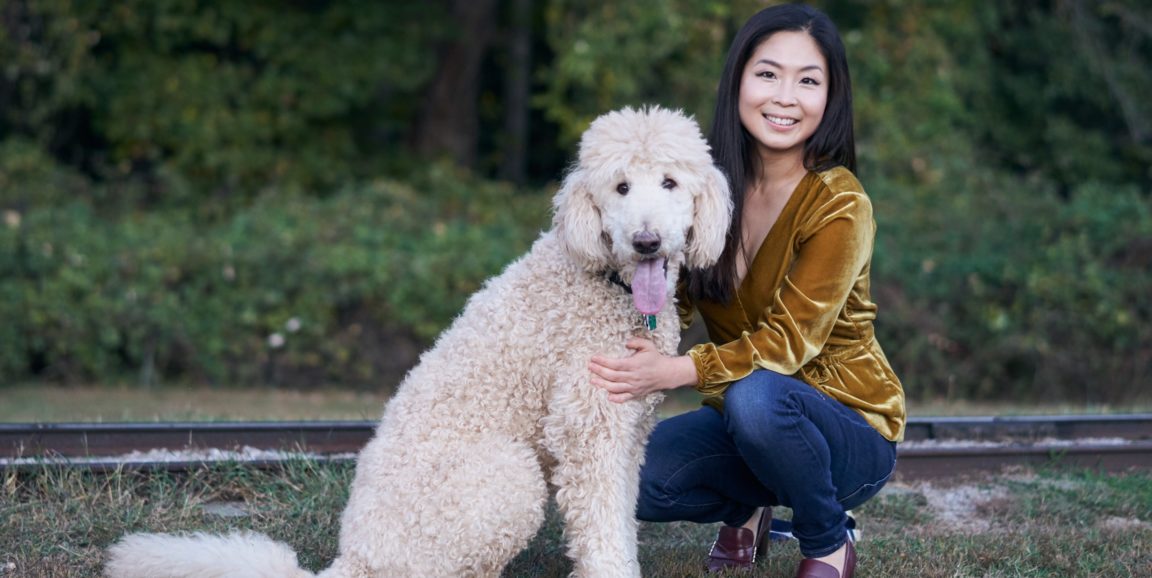Soon after undergoing neurosurgery to treat moyamoya disease at Stanford Hospital, Bethel Tan was lying in bed, in too much pain to sleep. Seeing her awake, the nurse on the night shift sat down in her room.
"She just talked to me, not like I was a patient, but like I was a friend," Tan said. "She wanted to know about me, who I am, not just a moyamoya patient." Tan had been afraid to admit she was hurting, fearing she'd become addicted to painkillers, but the night nurse convinced her they would be OK to take. She accepted the medication and fell asleep.
For years before she arrived at Stanford, Tan, then a high school math teacher in Maryland, had been experiencing troubling symptoms. She suffered from migraines so debilitating she'd hole up in a closet for as long as two days. Parts of her body would suddenly go numb: Her tongue sometimes stopped working, rendering her momentarily speechless; once her leg lost feeling as she descended a staircase, sending her cascading downward.
In 2011, when she was 28, Tan casually mentioned to a neurologist treating her for migraines that she experienced passing spells of numbness. The neurologist ordered an MRI and soon delivered the worrisome news: Tan had the characteristic "puff of smoke" seen in scans of moyamoya patients. In the disease, the arteries in the base of the brain become blocked, and a tangle of small vessels (resembling a puff of smoke, or moyamoya in Japanese) form to compensate.
Surgery was the best treatment, the neurologist said, but the disease is so rare -- in the United States, less than 1 in 100,000 people will develop it -- few medical centers are equipped to treat it. The neurologist recommended Gary Steinberg, MD, PhD, a professor of neurosurgery at the Stanford School of Medicine and the director of the Stanford Moyamoya Center. Steinberg has treated more than 1,500 moyamoya patients with bypass procedures to improve blood flow to the brain.
It took Tan several months to switch her health insurance and receive approval for the surgery. While she was waiting, she developed choreiform movements: Her body would start jerking involuntary. "I was conscious, but I couldn't stop moving," she said. "I was afraid to leave the house." She didn't realize it, but she had already suffered a few strokes.
As soon as she had approval from her health insurance, she scheduled the surgery at Stanford. Steinberg performed two procedures -- on either side of the brain -- a week apart in November 2011.
"She had severe moyamoya disease," Steinberg said. Without surgery, "she would have suffered more strokes, and the choreiform movements would have become very disabling. Her prognosis was not good."
Four days after the second surgery, Tan suffered complications that left her unable to speak normally for about six weeks. About 20% of patients who have operations on the left side of the brain develop aphasia after moyamoya surgery, Steinberg said, but nearly all recover within a few months.
"She was pretty remarkable in terms of how tough she was," Steinberg said. "She seemed to be an individual with a lot of courage."
Tan returned to the classroom to teach sooner than recommended, in April, because she wanted to see her students graduate. Overwhelmed by the work before she was fully recovered, Tan said she grew despondent, so her husband brought home a Labradoodle puppy. Caring for Milo helped Tan finish the school year, but she left the job after that.
"I used to love teaching, but I didn't want to do it anymore," she said. Several months after her surgery, she was fully recovered: Her energy had returned, and the numbness, migraines and choreiform movements were gone.
But she took a few years off, trying to figure out her next step. "Then I realized that the one good thing that came out of having moyamoya was that I met some incredible people at Stanford who were so caring and kind."
She thought back to the night nurse who sat with her after her surgery, listening to her and earning her trust. "That night nurse stayed in my mind," she said. "She was so human. I wanted to perpetuate that," she said.
She enrolled at a community college and earned her nursing degree. Today she works in the acute pulmonary unit at Inova Fairfax Hospital in Virginia and is pursuing a bachelor's degree in nursing.
Tan said she often recalls her time in the hospital: "What I'm trying to do is be in the moment with the patient and listen to what they're saying. Really listening," she said. "They're concerned about their illness, but they have other issues that are just as important to them. Like, 'Will I be able to have children?' Or 'Will I be able to enjoy my grandchildren as they're growing up?'"
"I try to build relationships," she said. "When I'm working as a nurse, I always think, 'What was I feeling in that hospital room?'"
Editor's note: We'd love to talk with the night nurse who inspired Tan. If you know who that might be, please email Mandy Erickson at merickso@stanford.edu.
Photo of Tan with Milo by Brian Tan




